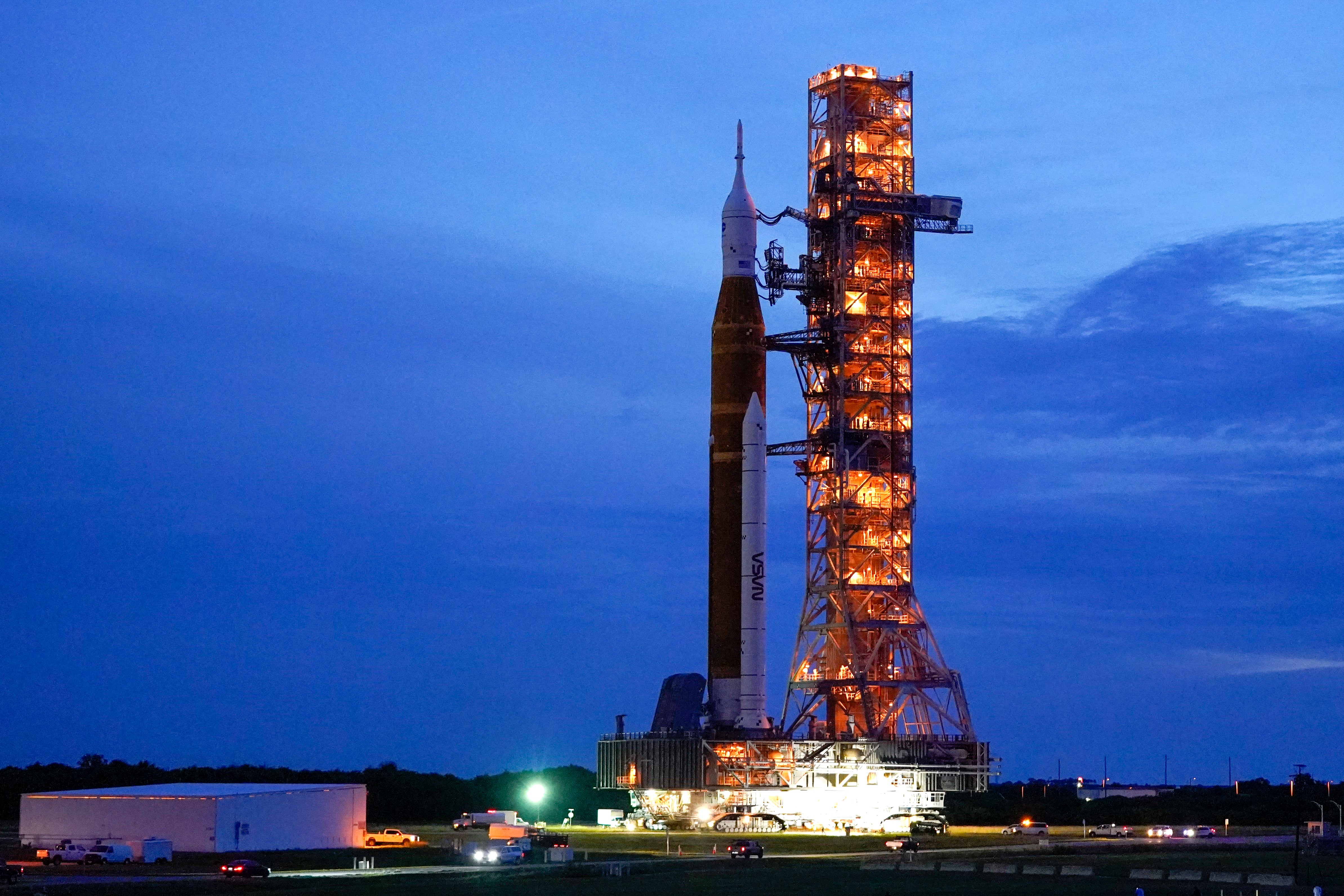NASA launch of moon rocket delayed again by tropical weather
NASA is again postponing the launch of its new moon rocket because of a storm threatening the Florida coast

Your support helps us to tell the story
From reproductive rights to climate change to Big Tech, The Independent is on the ground when the story is developing. Whether it's investigating the financials of Elon Musk's pro-Trump PAC or producing our latest documentary, 'The A Word', which shines a light on the American women fighting for reproductive rights, we know how important it is to parse out the facts from the messaging.
At such a critical moment in US history, we need reporters on the ground. Your donation allows us to keep sending journalists to speak to both sides of the story.
The Independent is trusted by Americans across the entire political spectrum. And unlike many other quality news outlets, we choose not to lock Americans out of our reporting and analysis with paywalls. We believe quality journalism should be available to everyone, paid for by those who can afford it.
Your support makes all the difference.NASA is again postponing the launch of its new moon rocket because of a storm threatening the Florida coast.
Fuel leaks have kept the rocket grounded since August. Then Hurricane Ian forced the rocket back to the hangar at Kennedy Space Center at the end of September.
The rocket was moved back to the launch pad last week, and NASA was aiming for a launch attempt early Monday.
But on Tuesday, the space agency said it was delaying the launch until at least next Wednesday because of Tropical Storm Nicole, which is expected to hit Florida's Atlantic coastline as a Category 1 hurricane over the next few days. The space center is under a hurricane warning but NASA is keeping the rocket at the launch pad. NASA said the rocket is designed to withstand heavy rains and high wind.
The $4.1 billion mission will send an empty crew capsule around the moon and back in a flight test before astronauts climb aboard in a couple years. It is NASA’s biggest step yet to get astronauts back on the moon by 2025. The space agency is nearing the 50th anniversary of its last human moon landing: Apollo 17 in December 1972.